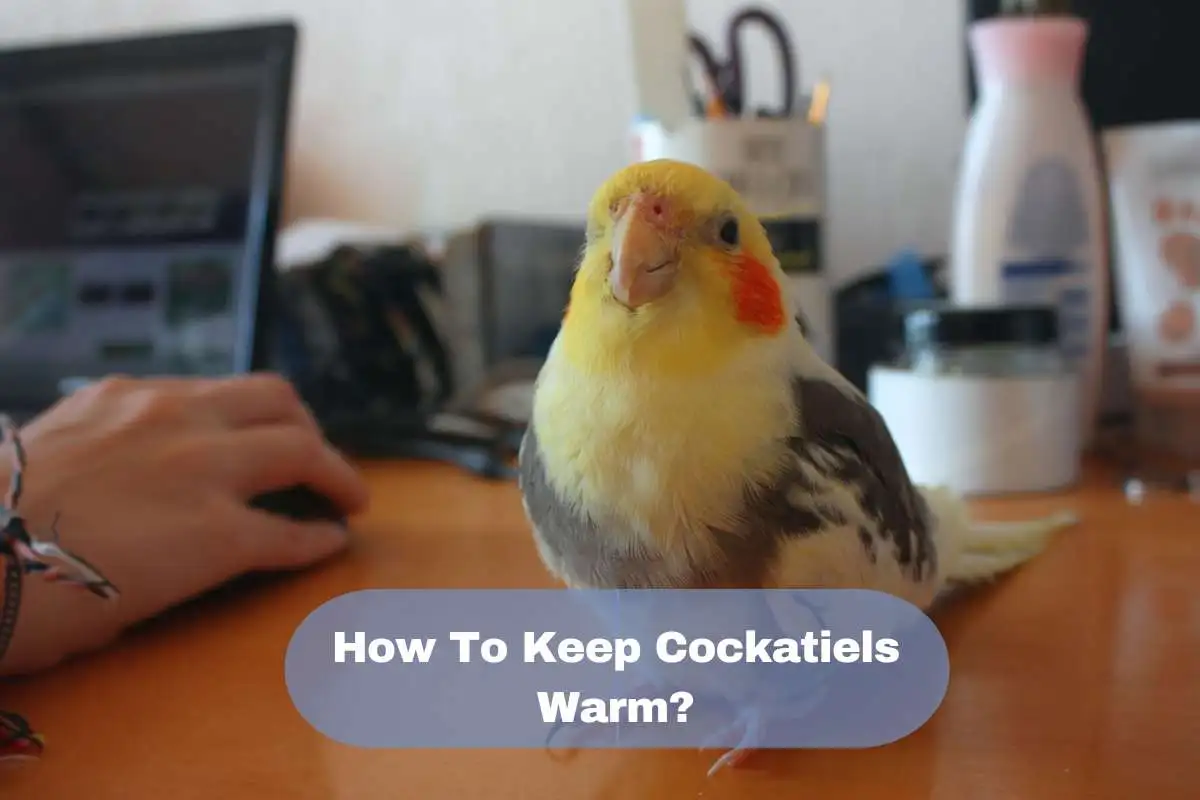Cockatiel parrots are native to Australia, and they need a warm environment to stay healthy and comfortable. In the wild, these birds are used to temperatures that range between 75 and 85 degrees Fahrenheit, and it is important to replicate these conditions in captivity. So, if you have pet cockatiel you probably wondering about how to keep cockatiels warm?
To keep your cockatiel warm, provide a heat source such as a lamp or heater near its cage. Monitor the temperature and make sure it’s between 65-to-85 degrees Fahrenheit during winter months. Cover the cage with cloth or papers during cold weather.
To know more details about ideal temperature for cockatiels, read my recent published article about : what temperature you need to keep your cockatiels
In this article, I’ll tell you how to keep your cockatiel warm by placing him in a proper cage, using heating equipment and appropriate bedding materials.
How To Keep Cockatiels Warm in Winter?
Here are 5 methods to keep your cockatiel warm in winter:
- Consistent warm environment: Cockatiels are native to Australia and thrive in warm temperatures. Keep their cage in a warm room of the house, away from drafts and cold sources such as windows or air conditioning vents.
- Use a heat source: A ceramic heater or heating lamp can provide additional warmth for your cockatiel. It’s important to monitor the temperature to make sure it doesn’t get too hot or too cold.
- Use a bird-safe cage covers: These can be used in the evening or at night to retain heat and create a warm and cozy environment for the bird.
- Use different material perches: Cockatiels can choose a perch that offers them a way to regulate their body temperature. The best perches are made of different materials, such as wood or metal, which have different temperature sensations for the bird.
how to Keep Baby Cockatiels Warm?
If you want to keep your baby cockatiel warm, provide a cozy nesting box with soft and thick bedding material. This will allow your bird to snuggle up and maintain its body temperature.
It’s important to keep the nesting box in a warm room away from drafts and to monitor the temperature. A heating lamp or ceramic heater can be used to provide additional warmth, but it is important to monitor the temperature and be careful not to overheat the nesting box.
Additionally, using a bird-safe cage cover at night or in cold weather can help retain heat and create a warm environment for your baby cockatiel.
how to Keep Cockatiel Eggs Warm?
To keep your cockatiel’s eggs warm, place them in an incubator.
An incubator is a device that controls the temperature and humidity in which the eggs are kept, mimicking the conditions that the eggs would experience in a nest. Incubators come in various sizes and designs, and can be either manual or automatic.
The eggs should be placed on their side inside the incubator, with a temperature of around 37.8 degrees Celsius (100 degrees Fahrenheit) with a humidity of around 50-55%.
It is important to keep the temperature and humidity of your incubator consistent throughout the incubation period, which typically lasts around 18-21 days for cockatiels.
Some incubators also have a turning feature, which rotates eggs after certain periods of time to help with even development of embryo.
how to Keep Cockatiel Warm at Night?
To keep a cockatiel warm at night, you can take the following steps:
- Provide a heat source: If you have a ceramic heat emitter or a heat lamp, you can use them to provide a source of heat for your bird. Place the emitter or lamp on one side of the cage and allow the bird to move closer or further away as needed to regulate its body temperature.
- Insulate the cockatiel cage: The cage should be placed in a room that is kept at a consistent temperature, away from drafts or direct sources of heat or air conditioning. To make sure your pet isn’t too hot, place a blanket over it at night to keep it warm.
- Keep cockatiel active: Make sure your bird gets plenty of time to exercise and move around during the day, as this will help them maintain a healthy body temperature.
- Monitor temperature: Keep a thermometer in your bird’s cage to make sure that the temperature remains within a safe and comfortable range. The ideal temperature range is around 21-24C (70-75F) at night. Proper bedding: make sure the bedding or perches are not cold to touch, either they are heated or covered with a warm cloth.
What Temperature Is Too Cold for Cockatiels?
The temperature that is considered too cold for cockatiels is below 10-15 °C (50-60 °F).
Cockatiels are tropical birds native to Australia and are used to warmer temperatures. Their inability to handle extremely cold temperatures can lead to hypothermia, an increase in their risk of illness, and an inability to fly. When exposed to cold temperatures, they may show symptoms such as puffing up of feathers, reluctance to move, or lethargy. It is important that you provide your cockatiel with a warm and consistent temperature range during cold days or seasons so that it remains healthy.
Importance of Humidity Control for Cockatiels
Cockatiels, like other birds, have delicate respiratory systems and their skin and feathers can be negatively affected by improper humidity levels. High humidity can lead to mold and bacteria growth, which can cause respiratory issues in birds. On the other hand, low humidity can cause dry skin and brittle feathers which can lead to feather plucking and other health problems. Therefore it’s necessary to keep the humidity at optimum level.
Did I Answer Your Query About How To Keep Cockatiels Warm?
Keeping cockatiels warm is essential for their overall health and well-being, so it’s important to make sure your bird is comfortable in its environment. It’s also important to note that cockatiels are social birds and may feel more comfortable and secure if kept with a companion, so consider getting another cockatiel as a companion for your bird.
To prevent cold-related issues, it’s also important to provide proper bedding and avoid any exposure to extremely cold temperature (below 10-15°C/50-60°F).

